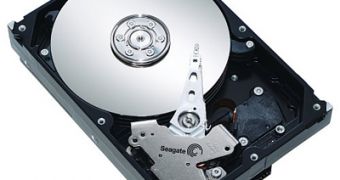The hybrid hard disk drives, HHDs for short, are looking like the best solution nowadays when users are kind of fed up with the slowness of the traditional hard disk drive, HDDs for short, while also being shy from the extravagant price tags that come with the new storage devices, the solid state drives.
As a middle ground solution between the two extremes, the hybrid hard disk drives are combining the platters and heads of the HDDs with a large non-volatile memory based on flash chips like the solid state drives, SSDs for short. The large non-volatile memory should speed up access to frequently modified files and even offer a boot process boost as the required files could be placed on the faster cache memory instead of the disk's data surface.
Seagate finally has begun shipping its HHD units after a full year of tinkering with the new design, but unfortunately it looks like users will have to go through OEM dealers in order to get such a drive as the manufacturing company did not start shipping them to the retail channel yet. The Momentus 5400 PSD is such a hybrid hard disk drive and it comes packed in the small form factor of 2.5 inch which is the typical size for a mobile storage unit. While Seagate did not publish the price of this new drive, according to the news site extremetech, the Momentus 5400 PSD is expected to have a pretty high price tag of between 25 to 30 percent when compared with a traditional drive of the same capacity.
Melissa Johnson, a product manager for the manufacturing company, said that the new hybrid drive will ship in 80, 120 and 160GB capacities and it will come with a standard five years warranty. As the hybrid hard disk drives are able to power down the spinning platters and only use the cache memory when needed, they could prove to be very energy efficient and increase the battery life of most laptops and notebooks.
The Momentus 5400 PSD will arrive with 8MB of random access memory cache and it will also have 256MB of flash memory that will act as a buffer in order to delay write requests to the disk. The presence of the additional memory makes the drive's average power consumption to drop from 0.78W to 0.45W, but the performance of these first generation drives is still lagging behind most expectations.
This situation could be addressed by the inclusion of a new range of tuned drivers in the operating systems as well as the development of new BIOS settings. As the hybrid hard disk drives are becoming more popular and new resources are poured into their development, hardware manufacturing companies are hoping to greatly increase their potential.

 14 DAY TRIAL //
14 DAY TRIAL //